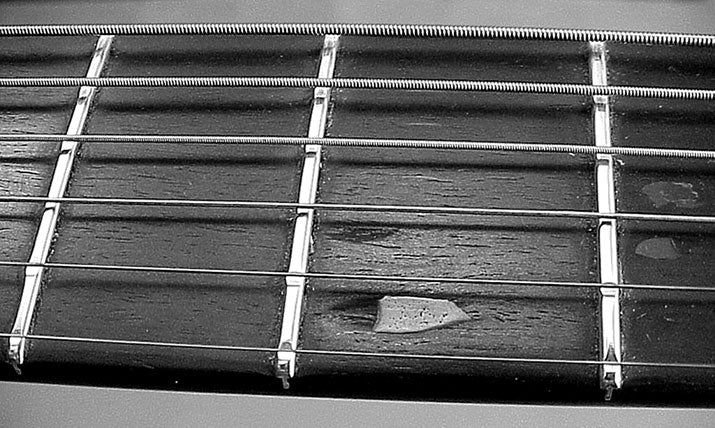Common Repair Questions Answered
Get stories like this in your inbox (free!)
Dick Boak and Rick Turner provide answers to two frequently asked questions about common guitar repairs in this excerpt from the Acoustic Guitar Owner's Manual.
Q: Can you recommend a material to fill the worn spots in my fingerboard?

A: Assuming that the neck has not been refretted several times (thereby diminishing the thickness of the fingerboard), the frets can be removed and the fingerboard can be surfaced smooth and refretted. If the ruts are too deep, they can be filled using a mixture of sawdust and glue or just plain superglue, though this will no doubt show up, especially on a rosewood fingerboard. (Ebony is more forgiving.) If neither of the first two options is acceptable, and if any vintage consideration can be outweighed, then the old fingerboard can be removed and a new one put on. Refretting will probably be necessary in all three scenarios, since play that produces such wear on the fingerboard will most likely have destroyed the frets as well. – Dick Boak
Q: How would I go about painting graphics on my acoustic guitar? Should I sand off part of the finish?

A: If you try to sand away part of the finish, you'll probably burn through to bare wood somewhere. You'd be better off starting from scratch. Get an unfinished guitar and apply a good sealer, such as Stewart-MacDonald's 3883, available in spray cans. Then sand it dead flat with no burn-throughs to about 320 grit. Do your graphics with paint that's compatible with both the sanding sealer and the top-coat finish you're going to use. Apply a top coat of something like Stew-Mac #381 clear gloss lacquer, allow it to cure, and then go through the stages of final sanding and rubbing it out.
Before doing anything, I would get a copy of Stewart-MacDonald's catalog and carefully read the advice on finish. Then I'd find a guitar finisher and have him or her do the job! Fine guitar finishes rarely just happen the first time; it takes several years and many guitars to learn high-quality finishing, and the learning curve is fraught with frustration, especially for those learning on their own. – Rick Turner

